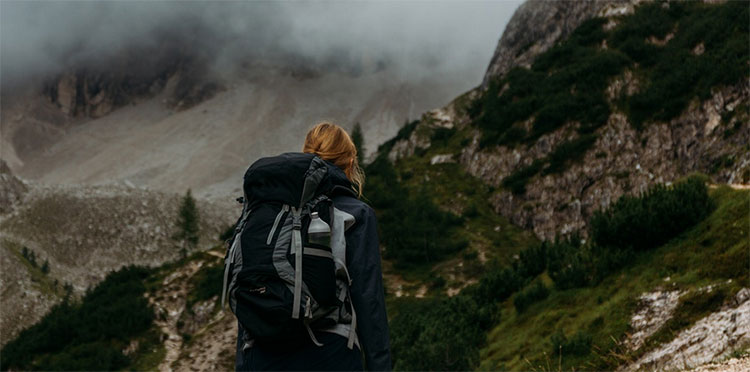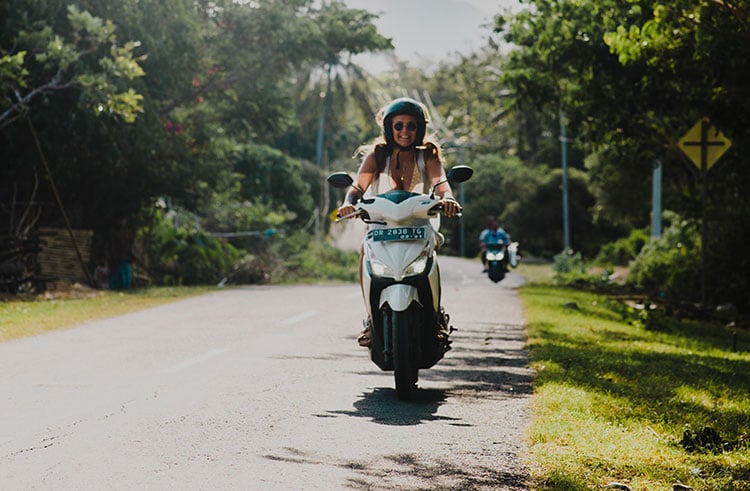Backpacking in Bali, What You Need to Know

The Indonesian tourist island of Bali is particularly suited for backpacking, and a lot of tourists prefer the venture because it allows them to experience Bali more authentically.
Here are some things to consider as you plan your Bali backpacking adventure.
The Cost
Cost is one of the most nerve-wracking aspects of planning any backpacking trip. It is difficult to state a specific number for a Bali backpacking trip authoritatively, but there are some things to consider that will help you narrow it down.
Transport is critical. A moped hire is considered the least costly way to travel. Hiring a moped for a day costs around 50-60,000 IDR. Filling the tank of a motorbike is around 20,000 IDR. Usually, a driving license is not needed to rent a moped (a small motorcycle), but a copy of your passport and the pay are required.
Other than transport, the majority of your budget will be taken up by accommodation, food and the activities you decide to undertake. Accommodation can either be in 5-star hotels, hostels, or local homestays. Homestays are rooms within the home of a local, and they cost between $10 to $20 per night for a two person stay.
Hostels are not many in Bali, but Umakhu hostel in Seminyak, for instance, costs $9. The average price is between 9 and 15 dollars. For hotels, one can find most of their prices online while getting great deals at the same time.
Food will depend on a person’s budget, but the cost is friendly all around. A local dish in a Warung goes for approximately 20 to 30,000 IDR, street food costs just 15,000 IDR and steaks in a steak house Bali might cost between $30 and $50.
With this information, remembering that $1 is equal to 14,000 IDR, it will be easy to estimate the overall cost depending on the number of days you plan to stay in Bali.

The Checklist
Similar to a trip anywhere else, essentials such as a camera, a daypack, camping gear, toiletries and swimming gear are required.
However, for a checklist specific to Bali, there are a few things to consider. In terms of clothing, the only thing to note is that April to November is the drier season thus lighter clothes are preferable, while November to March is the wetter season hence a jacket might be in order. However, the temperature remains relatively constant, so it is not much of an issue.
It is advisable to pack a sarong especially if you plan on visiting the temples. For both men and women, covering the shoulders and knees is a must before entering the temple. If you do not pack one, then you will have to obtain one in Bali.
Good hiking shoes are a necessity because the terrain can be a tad harsh, and sandals as well for beach walks.

Possible Activities to Consider.
People backpack for a chance to carry out outrageous activities, see new things and meet new people. When backpacking in Bali, there are a number of favorite activities you should consider.
Climbing Mount Batur for the sunrise is one such activity. Mount Batur is an active volcano that is 1,700 meters high with a breathtaking sunrise view. Signing up for the trek means that you will get a guide whose job is to ensure you are at the top most part before sunrise. The trek typically begins at 2 a.m.

Exploring the temples is also another popular activity. Bali has over 20,000 temples with fascinating architectures. An excellent example is the Taman Ayun. It might be impossible to explore all the temples, but one can choose a handful and concentrate on them.
There are more activities such as biking in the rice fields, walking through the Ubud monkey forest and doing a yoga retreat. Simply, a backpacker is spoilt for choice.
Backpacking in Bali is a rewarding experience. Not only are you able to see more, you also experience the culture in the best way possible.
Have you read?
Europe’s 100 best and most innovative universities for 2018.
Here Are The 25 Best Countries To Purchase Rental Property And Make Money In 2018.
Who Is The Wealthiest Person In Britain: UK’s Rich List 2018?
Bring the best of the CEOWORLD magazine's global journalism to audiences in the United States and around the world. - Add CEOWORLD magazine to your Google News feed.
Follow CEOWORLD magazine headlines on: Google News, LinkedIn, Twitter, and Facebook.
Copyright 2025 The CEOWORLD magazine. All rights reserved. This material (and any extract from it) must not be copied, redistributed or placed on any website, without CEOWORLD magazine' prior written consent. For media queries, please contact: info@ceoworld.biz








